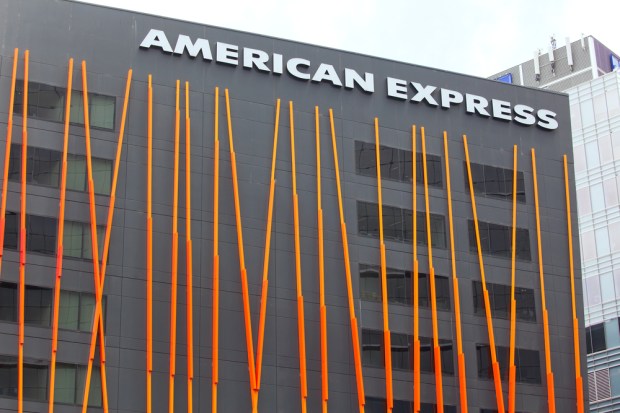Amex Earnings: Spend Gains But Profits Lag

American Express Co. said on Thursday that its fourth-quarter net income in 2016 was off 8 percent, weighed down in part by marketing expenses, and, as Bloomberg noted, reserves were taken to cover bad loans, which were up nine percent.
As reported by the company after the stock market closed, net income was $0.88 a share, off a penny from last year, while adjusted for certain items that tally came in at 91 cents, which still trailed analyst estimates of $0.99 a share. Expenses were heavier than some on the Street as Amex continues to make headway in the wake of losing its largest co-branded partner, Costco. Over the past several months, the firm has been busy cutting costs, to the tune of $1 billion, a goal that management told analysts on the Thursday call that was running ahead of schedule.
Though profits were off and below the Street, the top line was better than expected, with sales at $8 billion, down 4 percent from a year ago and yet besting analysts at $7.9 billion. And in another measure, the average discount rate, which tracks the fees that is charged by the card company to merchants, was up a few basis points to 2.44 percent from 2.42 percent.
Looking at total marketing and promotional expenses, the $1.2 billion spent in the latest quarter was driven by enhancements to the Platinum card, the Shop Small promotion in the quarter that just ended and digital initiatives.
The company said that the total worldwide billed business was down 3.7 percent to $263 billion, though the company had just under 110 million cards outstanding at the end of the quarter, reflecting the roughly 8 million cards it lost with the exit of the Costco portfolio in the United States. But adjusted for and excluding the Costco portfolio, the company noted on slides along with the earnings release, billings were up 7 percent. Breaking down that total a bit adjusted billings growth was highest in Japan, with total international growth at 11 percent.
In remarks on the conference call, Jeff Campbell said within the commercial segment, the company “continued to see healthy performance across our middle-market and small business portfolios and adjusted growth rates improved sequentially in both segments. In contrast, spending by large corporations remained weak with billings declining year-over-year as we have seen in recent quarters. I would say that it is too early to know if any of the changes in corporate and consumer sentiment that have occurred since the U.S. election will impact corporate volume trends going forward.”
Net card fees were up 6 percent year over year.
The company also boosted its full-year 2017 forecast tied to EPS to a range of $5.60 to $5.80, up from an initial $5.60.
